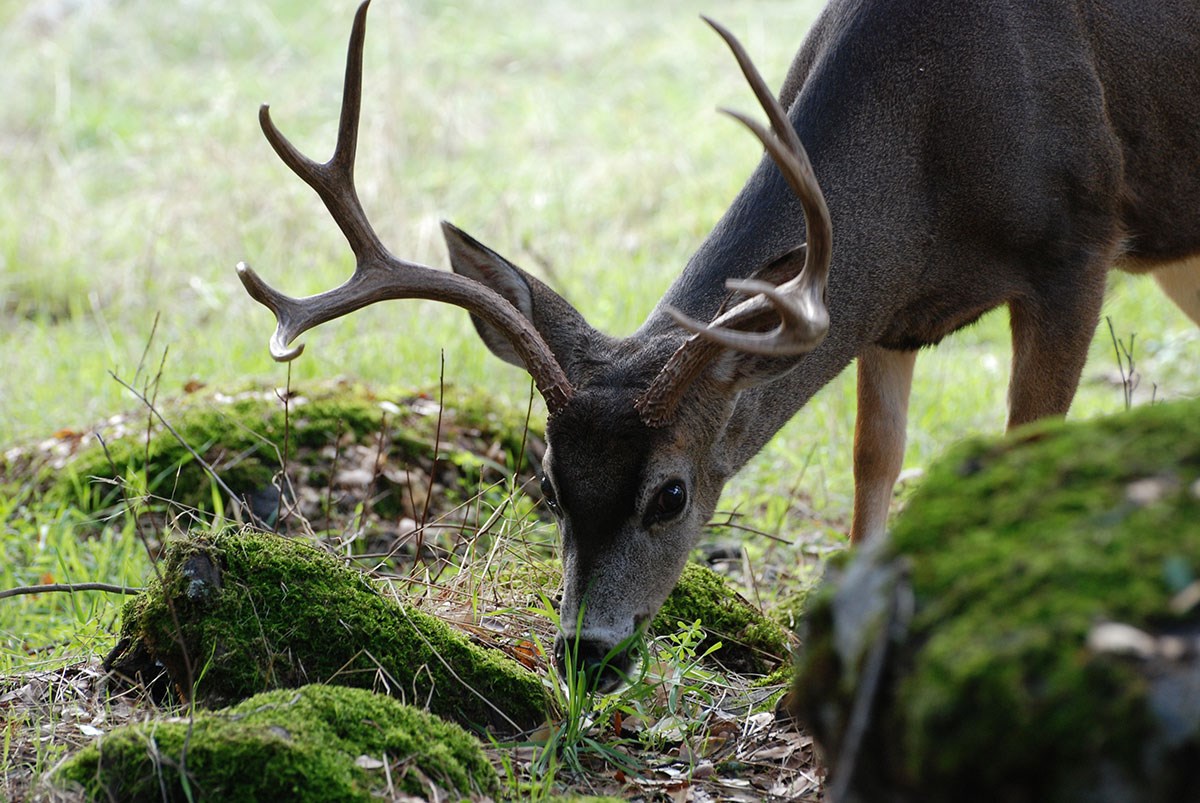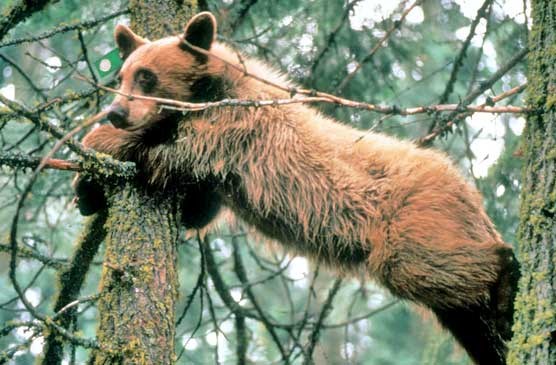
Photo © Alex Olow Sequoia and Kings Canyon National Parks are home to 72 species of mammals. Commonly observed species include yellow-bellied marmots, mule deer, pika, and several species of squirrels, such as California ground squirrels, Douglas squirrels, golden-mantled ground squirrels, and western gray squirrels. Most mammals are secretive and nocturnal, and they are rarely seen by park visitors. Examples include ringtails, spotted skunks, short-tailed weasels, and mountain lions. A tremendous diversity of habitat types is present in the parks, owing largely to an elevation gradient that ranges from 1,370 below park headquarters to 14,494 ft at the top of Mt. Whitney, the highest point in the continental United States. As a result, two groups of mammals are particularly diverse-- RodentsThere are 26 species of rodents, ranging in size from the tiny montane vole up to the beaver, which can be 4 feet long and weigh over 60 pounds. This group also includes mice, squirrels, gophers, chipmunks, marmots, wood rats, and porcupine. 
Photo by Joseph Danielson, Nevada Department of Wildlife. BatsSeventeen species of bats use these parks, including several species of concern such as the Townsend's big-eared bat, pallid bat, spotted bat, western mastiff bat, and western red bat. One out of every 5 mammal species in the parks is a bat! Bats find food by emitting a high-frequency call and using their sensitive hearing to detect echoes from flying insects. Three species in the parks emit calls audible to the human ear – listen for them at night if you visit the parks. Bats are found from the lowest elevations in the park to higher than 10,000 feet. 
NPS Photo BearsThe American black bear is an omnivore (eating both plants and animals) and frequently eats berries and meadow plants, claws at logs or digs for insects, dangles from sugar pine branches to go after cones, and forages for acorns in the fall. A male black bear weighs an average 300 to 350 pounds, and smaller females weigh 150 to 200 pounds. Black bears can range in color from cinnamon brown to black, and some can have light blazes on their chests. The California grizzly once occurred in these parks and was abundant throughout the state.Grizzly bears were exterminated in California by the 1920s. The California grizzly remains one of the state’s most enduring symbols, adorning both the state flag and seal. If you are visiting these parks, learn more about how to store your food to protect park bears. Threatened or Endangered MammalsSierra Nevada bighorn sheep is the only park mammal listed as federally endangered under the Endangered Species Act. Learn more about local efforts to restore populations of bighorn sheep in these parks. The Pacific fisher, wolverine, and red fox are state-listed as threatened in California, and the Townsend's big-eared bat is a candidate for state-listing.
More InformationIf you would like more information bears in national parks, including photos, videos, and links to other parks with bears, visit Bears. To get a checklist of mammals in these parks, select "Mammals" from the NPSpecies search tool below. Be aware that these species lists are in-process of being updated to be consistent with current information. Select a Park:Select a Species Category (optional):
Search results will be displayed here.
|
Last updated: October 3, 2023
